The Buildings And Models Of Architect Brad Cloepfil And Allied Works
The stunning models of Portland's preeminent architect are as much sculpture as they are architecture. Brad Cloepfil walks us through their exhibition at the Portland Art Museum, as well as his globe-spanning career.
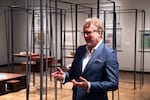
1 of 26
Portland native Brad Cloepfil made his name internationally with the Wieden+Kennedy building before going on to design major projects including the Clyfford Still Museum in Denver, the Museum of Arts and Design in New York, and the National Music Centre in Calgary.
Aaron Scott / OPB
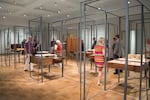
2 of 26
There are three parts of the the "Case Work" exhibition at the Portland Art Museum. "I conceived the frames as a series of thresholds that invite you in, and then they hold the toolboxes," says Cloepfil.
Courtesy of Portland Art Museum, Photos by Cody Maxwell
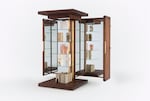
3 of 26
"There are 10 different tool boxes that unfold in certain ways — slide and fold, hinge — and all of those activities represent some sense of infinite opening. And the display cases were conceived as toolboxes because I could not conceive of the concept models on white vitrines with Plexiglass, because they are not pieces of art in my mind: they’re visual tools."
Arthur Hitchcock
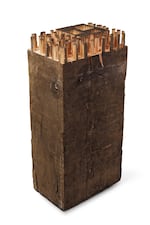
4 of 26
"For me, I love them because they represent the ideas and the search for ideas. I refer to them as visual evocations. They’re really meant to evoke ideas. They’re not supposed to represent buildings, they’re supposed to represent ideas of architecture."
Jeremy Bittermann

5 of 26
"I really wanted to be an artist, but I couldn’t go to my parents and say, ‘hey, would you pay for my unisersity so I can study art?’ So my brother introduced me to architecture, and I thought, ‘well that’s close to art.’ I do think that my interest and my thinking and the creative practice that we do at Allied Works is an artistic practice, and it goes back to that beginning, as I entered architecture more as an artist than looking for a profession."
Jeremy Bittermann
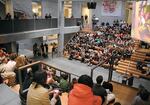
6 of 26
Cloepfil's designs for the Wieden+Kennedy building in Downtown Portland launched him into the national eye and kickstarted his career. "Dan Wieden wanted everybody in one space, so we started with the idea of cutting a huge hole in the middle. And then that building is essentially a full-scale concept model. That five-story concrete box within that block then became a filter of light and people and activity and created that auditorium and started a whole conversation about that agency."
Sally Schoolmaster
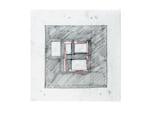
7 of 26
"So when we found that building in the Pearl, it’s a five-story 200x200 block, and it had no natural light — it was a cold storage building. So I knew I had to carve it up. So I started doing a series of charcoal and pastel sketches about how to bring light shafts in and vertical circulation and things."
Dan Kvitka
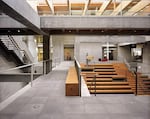
8 of 26
"And that workspace has become a model all over the world. It’s one of the most copied workspaces. What I learned more than anything was that delicate balance of creating a sense of awe and wonder and that implied complexity and not have it overwhelm the nature of the activity."
Sally Schoolmaster
![On the Dutchess County Residence in Stanfordville, NY: "A client came to us with 400 acres in New York to do three buildings. The guest house was the first thing we were going to build. I found this rise above a bare creek and going there [in winter], it was bare trees."](https://opb-opb-prod.cdn.arcpublishing.com/resizer/v2/WLLUWDEALZFKNB6VJW53HYALKI.jpg?auth=cdd71f2d829d1bb00cf099e41b80d80abf5f2a79bb67a5537652f4a5e9fc7b69&width=150)
9 of 26
On the Dutchess County Residence in Stanfordville, NY: "A client came to us with 400 acres in New York to do three buildings. The guest house was the first thing we were going to build. I found this rise above a bare creek and going there [in winter], it was bare trees."
Dean Kaufman

10 of 26
"The idea of a naked landscape like that, with just the abstraction of these black trunks, it just came to me that if we could just weave the architecture through the forest, that would be the perfect thing to do, so I came back and did that sketch. And then we spent the next six months trying to figure out what that meant."
Dan Kvitka

11 of 26
"The concept model is the rationalized version of that sketch, but between that sketch and that model is about three or four months of exploration. We did wire models, we did paper models, we did stick models. We use a lot of different materials to try to find the right expression of the idea. The concept model for the Dutchess County guest house, again, it’s an abstraction of tree trunks and it shows the now rationalized 8-inch steel tube, which is actually two systems of cantilevers that interlock in space, because I wanted it to be that indeterminate boundary that’s evoked by the sketch."
Arthur Hitchcock
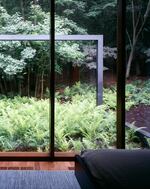
12 of 26
"The sketch represents this line weaving through the trees, the model represents the rationalized structure, and than the structure is bigger than the house. The house itself ends up occupying that structure, where it is just infilled with mahogany and glass to create the most delicate sense of enclosure. It’s like you’re woven into the forest. That’s the goal."
Helene Binet
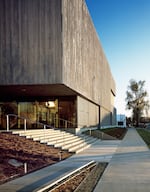
13 of 26
"The Clyfford Still Museum, it’s in a district of very aspiration cultural buildings, and all of those are very extroverted and iconic, so I wanted to place a reflection. And I knew Still’s work — very powerful, almost spiritual paintings. So I thought the appropriate thing to do in that concept was to introvert the building. That it’s a place for individual experience with a very powerful artistic career."
Jeremy Bittermann
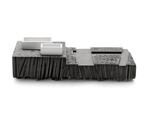
14 of 26
On the concept model for the Still Museum: "This is compressed charcoal in resin and then planed. We have quite a major workshop in Portland."
Jeremy Bittermann
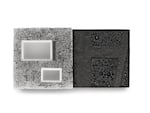
15 of 26
"The idea was that the building would be carved into the earth, and then these white shafts represent galleries filled with light and the light would be filtered through this resin piece."
Jeremy Bittermann
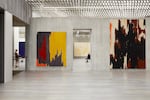
16 of 26
"I was very frustrated with the light, and I did a drawing where I said can’t we just puncture the ceiling like with pencils and bring the light through the body of the building. And we tried. We worked with the daylight consultants and developed that perforated site-cast slab, and it diffuses light in the most amazing, unbelievable way. "I think what we invented in that was a whole new museum type for individual artists, but more than that, we invented a whole new quality of light. A writer once described the light when that building opened as ‘liquid light.’"
Jeremy Bittermann

17 of 26
For the National Music Centre in Calgary, Cloepfil knew he had to build a five-story building and bridge over a road and a dilapidated jazz club.
Courtesy of Allied Works Architecture, Rendering by Mir

18 of 26
"I wanted each tower to evoke a different activity, quality, and experience. So we were looking at the studies for the concept model, and I was frustrated because they weren’t quite right. And I said, can’t we just go and find a musical instrument and cut it up or something. So the earnest young architects in my office went to Goodwill, got a trombone, cut it up, and then cast it in this concrete and planed it down. When they showed me the first bit, I couldn’t believe it. If we could do architecture like that, then we’d have it."
Jeremy Bittermann
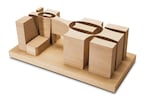
19 of 26
"With our first concept model, we got the project. The major precept of the concept is there’s space between. You go form one experience and then step into one of those gaps. It’s like a reset for your ears. But I wanted it to feel like one building. So after doing paper models, digital drawings, it led to this laminated wood model, where you see the original towers that correspond to the first concept model, and the forms morph and touch structurally."
Cridland

20 of 26
"These towers rise and touch at the top and it suspends the bridge across the road, and then those towers transform and touch at the bottom and lift to create a lobby space of about 180-foot span of structure. And those two systems cross in space. That in between space is the most powerful moment in the building."
Brandon Wallis

21 of 26
"The Ohio Veterans Memorial in particular is an incredibly challenging structure. It’s an irregularly shaped series of cantilevered concrete arches that weave together to create this basket of structure. It became a challenge to find someone who wanted to build the building."
Courtesy of Allied Works Architecture, Rendering by Mir
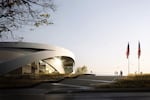
22 of 26
Courtesy of Allied Works Architecture, Rendering by Mir
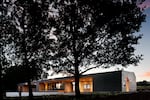
23 of 26
Allied Works designed the first LEED-certified winery building for the long-running Oregon winery Sokol Blossor.
Jeremy Bittermann

24 of 26
The inside of the Sokol Blosser tasting room
Jeremy Bittermann

25 of 26
Cloepfil's most recent project in Portland was the re-design of the 511 Post Office into the Pacific Northwest College of Art's Arlene and Harold Schnitzer Center for Art and Design.
MARIO GALLUCCI
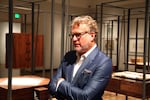
26 of 26
"Case Works" runs at the Portland Art Museum through Sept. 4.
Aaron Scott / OPB